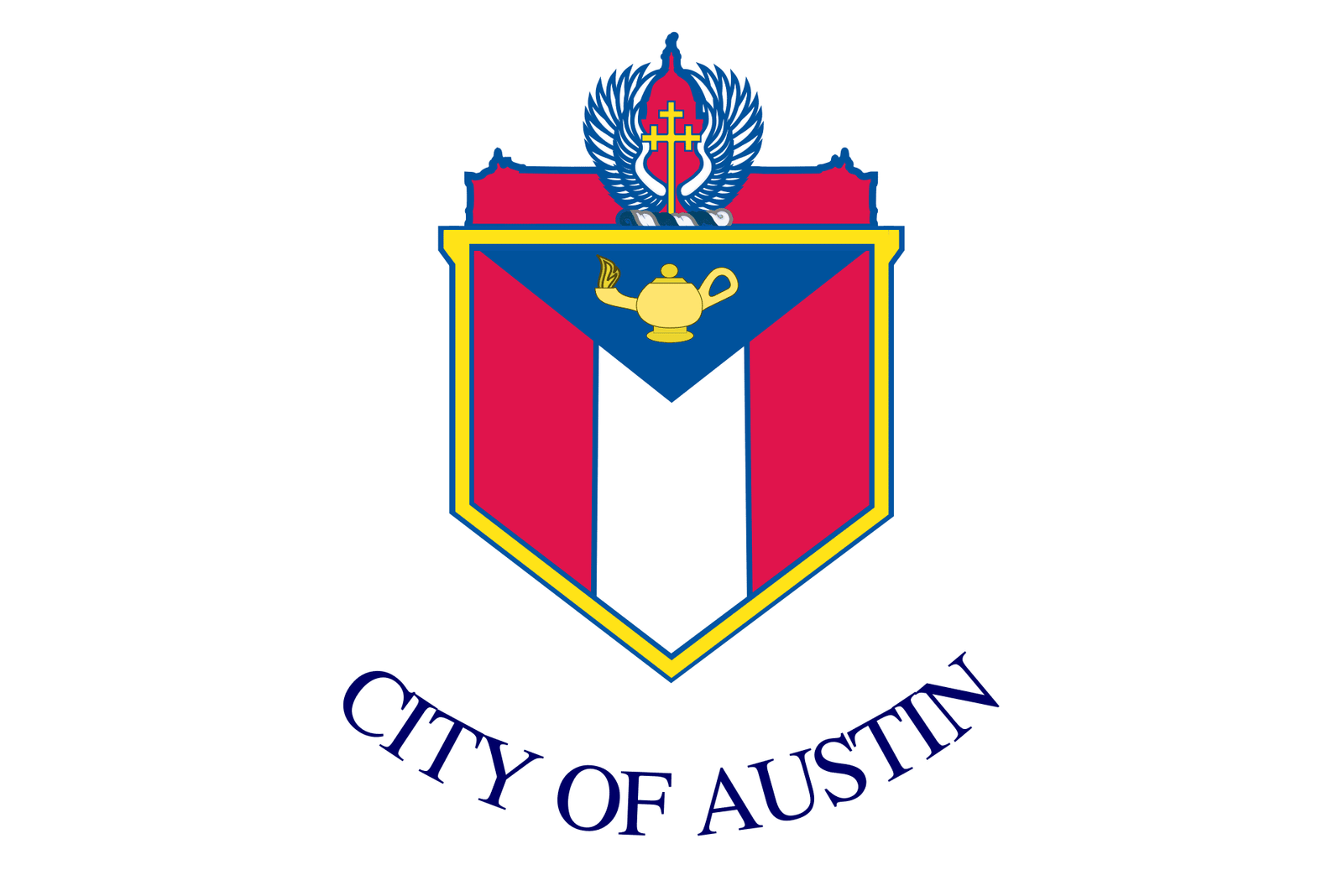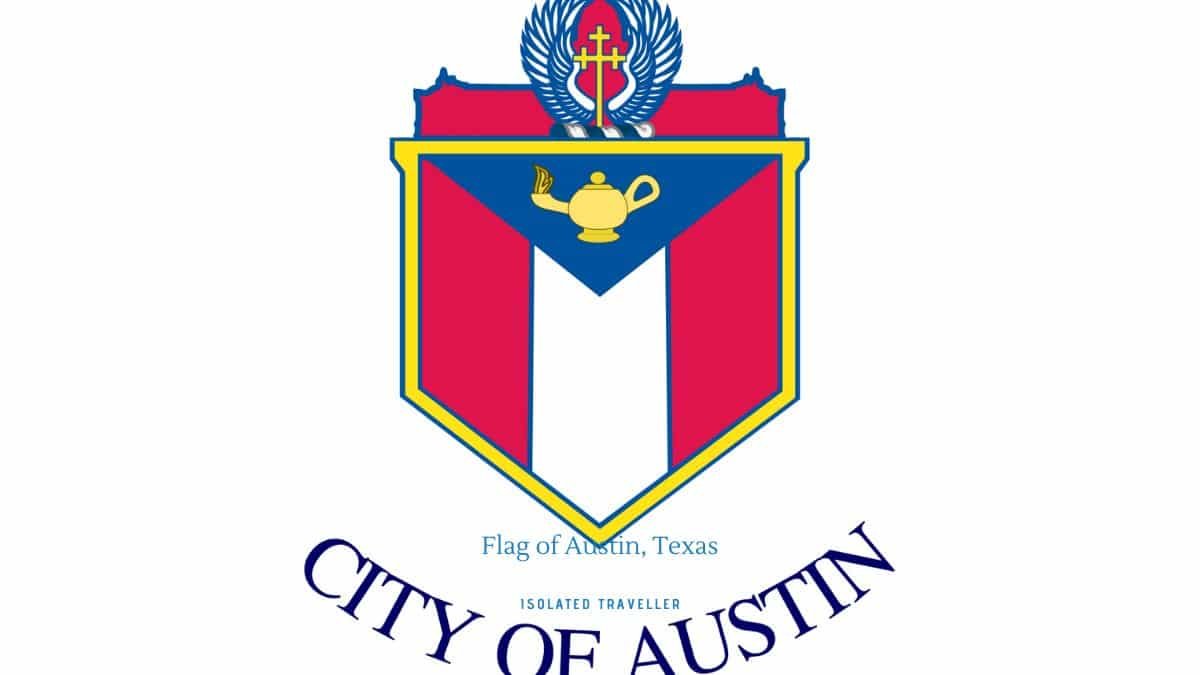Flag of Austin, Texas
The flag of Austin is the official flag of the city of Austin, Texas. The flag was adopted in 1940 and features a stylized version of Stephen F. Austin’s “Old Three Hundred” settlers’ coat of arms. It has been described as “the most beautiful city flag in America” by Good Morning America and one of the most unusual municipal flags in the country.

History
The flag of Austin was designed in 1940 by Michael De Santi and Charles Spearman. The original design was officially adopted on October 20, 1940, when Austin became the capital of Texas. The flag has been used to represent the city of Austin, as well as the state and even United States of America. It has also been used to represent the world since it is a universal symbol of peace.
Design and Symbolism
The seal of Austin has been in use since 1839 and is based on the coat of arms of Stephen F. Austin, father of Texas. The shield consists of a quartered field with a base colour of red and white stripes, with a blue chief bearing five silver stars. The top left quarter is divided horizontally into three parts: one black band across the top representing “cultural diversity”; two bands separated by a star representing “local government”; and one band at the bottom representing “commerce”. The middle third contains an image representing “natural beauty”, while at the bottom right is an image representing “industry”. Above them are three golden yellow stars arranged vertically on each side symbolizing the unity between locals.
The city seal was designed by Vice Mayor Jim Rudd (1949–1950) and approved by the council during its annual meeting on April 10th 1952 as part of their regular proceedings for approval for new business licenses for businesses within city limits that year—including hotels, restaurants and other businesses operating within that jurisdiction which required permission from City Hall before opening up shop officially as an establishment located within this geographical region.”
The red and blue stripes that make up the flag of Austin represent the Colorado and Brazos rivers. The white star represents the city itself, and red, white, and blue are the colours of both Texas and the United States.
Criticism
The flag of Austin, Texas has received its share of criticism. Some people feel that the blue lines represent the Colorado River, while others think they represent highways and roads in Austin. Still, others argue that they are meant to be water fountains. There has also been some debate over whether or not the white triangle at the top represents a hat—though this interpretation seems unlikely given that hats are always worn on heads, not vertically on flags.
Regardless of what you think it means, there’s no denying that this flag is more than just a symbol; it’s an expression of identity for many Austinite citizens and Texans alike. The state seal itself is full of symbolism: “The fountain signifies purity,” “the five crosses stand for Christianity,” and so on. Most importantly though is its meaning as part of our city’s history—it was adopted in 1940 after Mayor Harry Akin saw it hanging above his door during a trip abroad (he knew immediately he wanted one). For those who love Austin and its rich history, this makes our flag all the more meaningful: It was created by someone who knew exactly what we needed!
Conclusion
The flag of Austin, Texas is a simple design that features the city’s name in large blue letters and four white stars against a red background. The symbolism behind the flag can be interpreted in many different ways. Some people see it as a homage to Texas’ past as part of Mexico, while others see it as a symbol of unity among residents









1 Comment
Comments are closed.